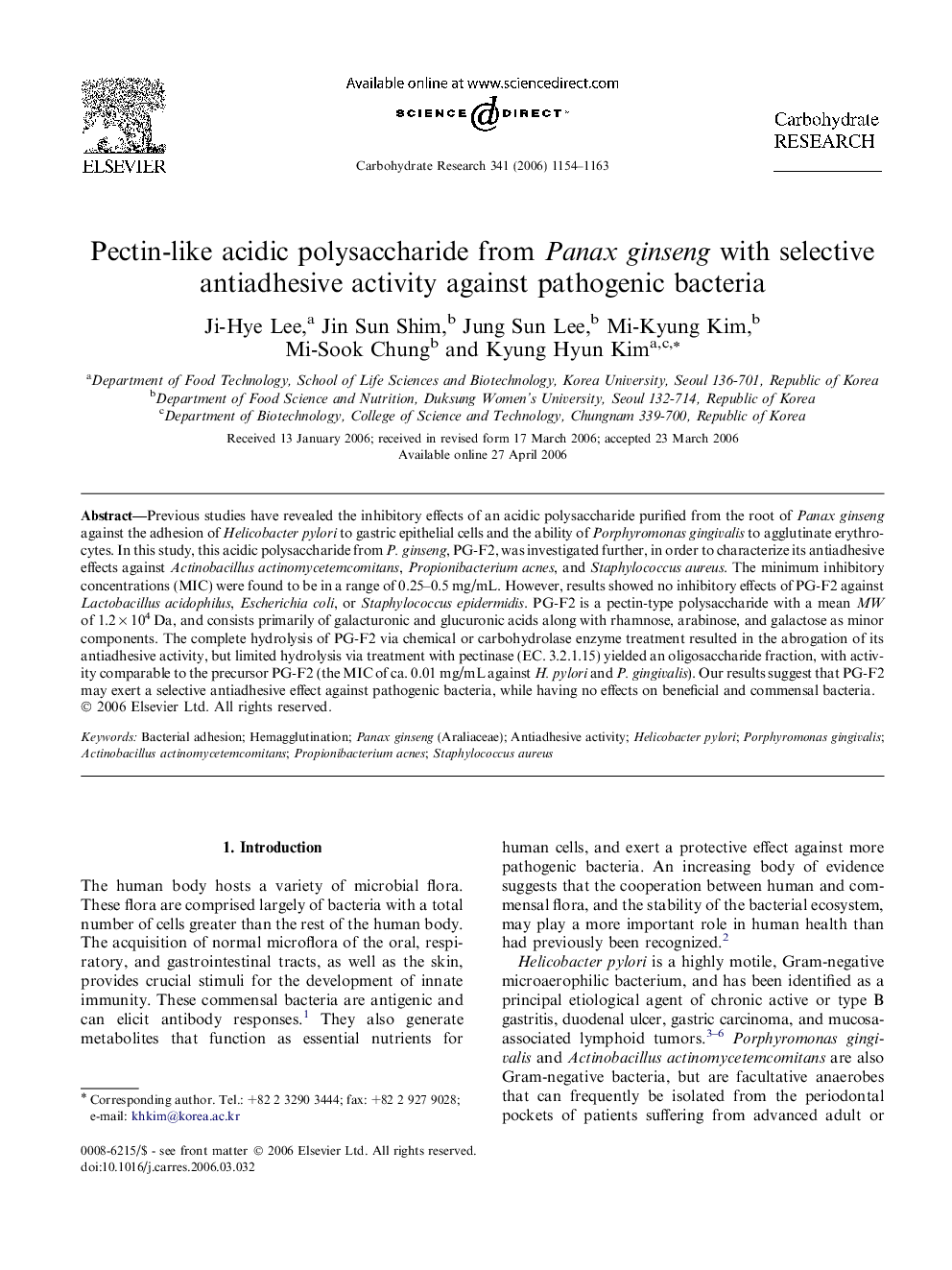| Article ID | Journal | Published Year | Pages | File Type |
|---|---|---|---|---|
| 1389454 | Carbohydrate Research | 2006 | 10 Pages |
Previous studies have revealed the inhibitory effects of an acidic polysaccharide purified from the root of Panax ginseng against the adhesion of Helicobacter pylori to gastric epithelial cells and the ability of Porphyromonas gingivalis to agglutinate erythrocytes. In this study, this acidic polysaccharide from P. ginseng, PG-F2, was investigated further, in order to characterize its antiadhesive effects against Actinobacillus actinomycetemcomitans, Propionibacterium acnes, and Staphylococcus aureus. The minimum inhibitory concentrations (MIC) were found to be in a range of 0.25–0.5 mg/mL. However, results showed no inhibitory effects of PG-F2 against Lactobacillus acidophilus, Escherichia coli, or Staphylococcus epidermidis. PG-F2 is a pectin-type polysaccharide with a mean MW of 1.2 × 104 Da, and consists primarily of galacturonic and glucuronic acids along with rhamnose, arabinose, and galactose as minor components. The complete hydrolysis of PG-F2 via chemical or carbohydrolase enzyme treatment resulted in the abrogation of its antiadhesive activity, but limited hydrolysis via treatment with pectinase (EC. 3.2.1.15) yielded an oligosaccharide fraction, with activity comparable to the precursor PG-F2 (the MIC of ca. 0.01 mg/mL against H. pylori and P. gingivalis). Our results suggest that PG-F2 may exert a selective antiadhesive effect against pathogenic bacteria, while having no effects on beneficial and commensal bacteria.
Graphical abstractFigure optionsDownload full-size imageDownload as PowerPoint slide
